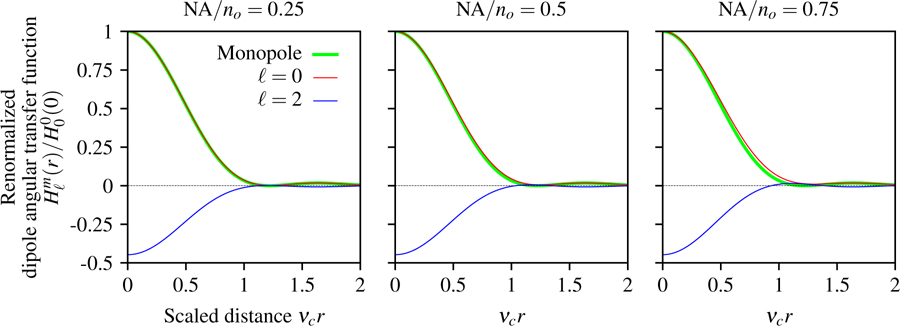Fig. 7.

Paraxial dipole angular transfer function in terms of a scaled radial detection coordinate νcr, the spherical harmonic degree ℓ, and NA/no. Angularly uniform distributions of dipoles ℓ = 0 generate a spatial pattern that is similar but not identical to the Airy disk created by a monopole (green), and this discrepancy increases with the numerical aperture. ℓ = 2 distributions have a negative response because is negative for transverse directions. As the numerical aperture increases, the relative contribution of positive axial dipoles in the ℓ = 2 distribution increases.
